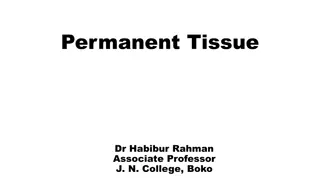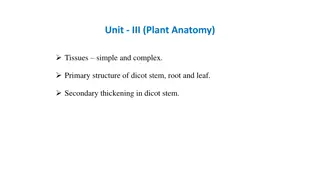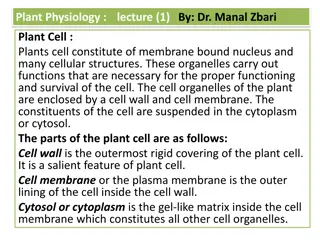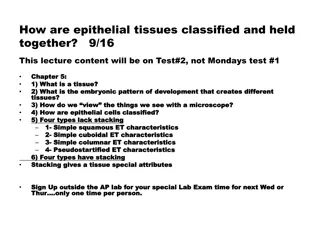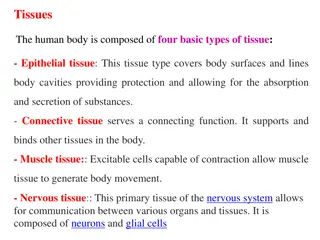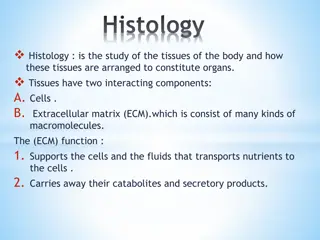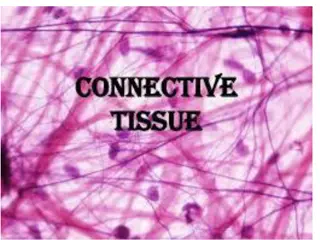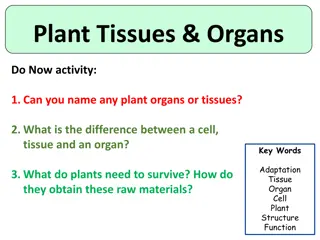Understanding Collenchyma and Sclerenchyma Tissues in Plants
Collenchyma tissue is living cells with irregularly thick walls, providing support in young and old plant organs, while sclerenchyma tissue consists of dead cells with extremely thick lignified walls, offering mechanical support in mature plant parts. Collenchyma can be classified into angular, lamellar, and lacunar types, while sclerenchyma includes fibers and sclereids, each serving specific functions in plant structure. Explore the characteristics and classifications of these important plant tissues.
Download Presentation

Please find below an Image/Link to download the presentation.
The content on the website is provided AS IS for your information and personal use only. It may not be sold, licensed, or shared on other websites without obtaining consent from the author. Download presentation by click this link. If you encounter any issues during the download, it is possible that the publisher has removed the file from their server.
E N D
Presentation Transcript
2- Collenchyma tissue: - Defination:- They are living cells with irregularly thick walls and acts as first supporting tissue in the plant. in young growing organs of the plant, and the old organs of herbaceous stems. Collenchyma are often found under the epidermis
Classification of Collenchyma tissue: - On the basis of distribution of wall thickening chlorenchyma can be classified into: - 1-Angular collenchyma In this type the wall thickening (deposition of cellulose & pectin) are localized in the corners 2- Lamellar collenchyma Cells arranged into ordered rows and the wall thickening is mainly found on the tangential wall of cells
3-Lacunar or (tubular) collenchyma Collenchyma with intercellular spaces, in which the wall thickening is restricted to the walls that facing the intercellular spaces. 3) Sclerenchyma tissues Definition: - They are dead cells with very thick lignified walls and considering as the principal mechanical support of fully grown parts of the plant.
Sclerenchyma tissues are Characterized by:- Composed of dead cells with extremely thick cell walls. Their cell walls consist of cellulose, hemicellulose and lignin. Cells are closely packed without inter- cellular spaces between them.
Classification of sclerenchyma tissues: - The sclerenchyma cells are classified into two types they are: A- Fibers A-Fibers: - Definition: - Fibers are long, spindle shaped cells with thick secondary wall and occur as strands in plant. Fibers characterized by the following: - Very much elongated cells with tapering or pointed ends and very thick walls. b- Sclereids
Sclereids .Definition: - They are short sclerenchyma cells having thick and strongly lignified secondary walls. Its function:- Protects soft plant tissue from herbivores or mechanical damage. Sclerides are characterized by the following: - A thick-walled lignified plant cell with narrow lumen. Often branched in shape. Shorter than fibers. Vary widely in shape and size.
Classification of sclerides According to different shapes and size it is classified : 1-Brachysclereid (Stone cell): Brachysclereids are also known as stone cells. These are isodiametric or elongated cells and are distributed widely in cells of cortex, phloem and pith of stem and are also found in the flesh of food.
2- Astrosclereid (Stellate): It is star shape. It is found in intercellular spaces of leaf and stems of hydrophytes.



